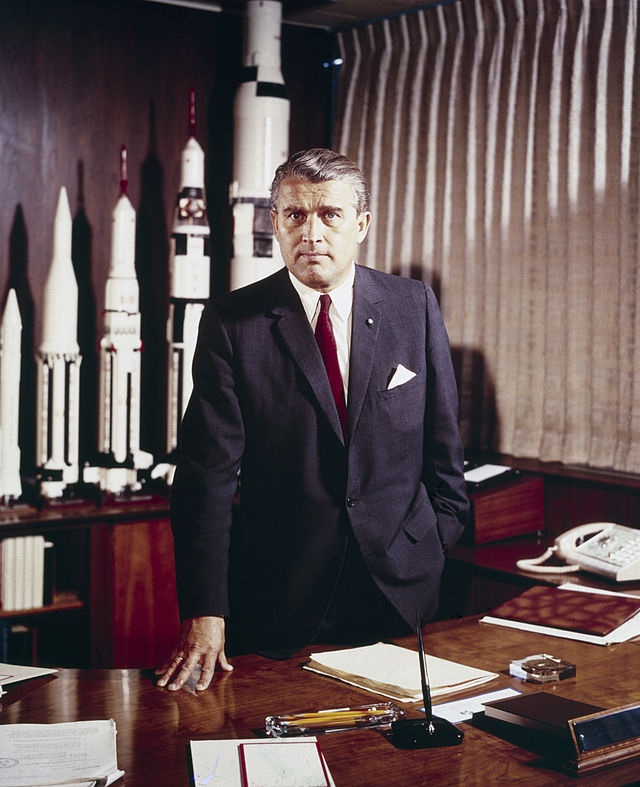The start of the Space Age is usually thought to be the launching of Sputnik by the Soviet Union in 1957. While Sputnik was the first Earth orbiting satellite ever launched and did start the Space Race, the actual roots of the Space Age reach back much earlier to World War II.
The Germans developed and deployed the V-1 missile against the British. The V-1 was a liquid fuel rocket that was twenty feet long with a range of one hundred and fifty miles. The first V-1 was launched on June 13, 1944 and was followed by eighty five hundred more. The V-2 was fifty feet long. There were over four thousand V-2 launched between September 6, 1944 and March 27,1944.
When Germany was defeated in World War II, the United States captured eighty eight of the rocket scientists who had worked on the Nazi rockets and brought them to the U.S. in Operation Paperclip. The U.S. authorities tried to keep the program as secret as possible fearing a public backlash. The U.S. was concerned that that Russians would make swift use of the German rocket scientists that they had captured to advance their missile technology and the U.S. did not want to fall behind.
Werner von Braun was one of the principle architects of the Nazi missile programs including the V-1 and the V-2. With allied forces advancing in the spring of 1945, von Braun called his engineers together to decide who they wanted to surrender to. Afraid of the notorious cruelty of the Soviet army, they opted to surrender to the U.S. After being moved to central Germany, the missile program was supervised by the SS who had order to execute the engineers if they were in danger of being captured. Von Braun managed to get his people dispersed to nearby villages under the pretext of being less of a target for U.S. bombing raids. When von Braun's brother encountered a U.S. soldier, he offered the surrender of Von Braun's group.
Von Braun and his team were brought to the U.S. under Operation Paperclip to work on ballistic missiles. They worked on instructing American engineers in rocketry and refurbishing V-2 missiles that had been captured by the U.S. for the next five years. Von Braun had always been interested in the use of rocket technology for space exploration. In 1950, he published an article about the possibility of rocket flights to the moon. There were two movies released in 1950 about flights to the moon. The seeds of the Space Race were sown by this wave of interest in space exploration.
When the Korean War broke out in 1950, Von Braun and his engineers were moved to Huntsville, Alabama to work on developing the Redstone rocket which was used for the first nuclear ballistic missile tests. Following the war, von Braun and his team developed the Jupiter-C rocket based on the Redstone missile. This rocket was used to launch the first U.S. satellite, the Explorer 1, on January 1, 1958.
NASA was created in 1958 to develop the U.S. space program. In 1960, NASA opened the Marshall Space Center to work on the Saturn rockets that could lift heavy payloads into orbit or to send them beyond Earth orbit. Von Braun and his people were officially transferred to the Marshal Space Center and he was named director of the center. Von Braun was finally able to concentrate of developing rockets for space research and exploration and the U.S. was off and running in the Space Race.
Werner von Braun:
